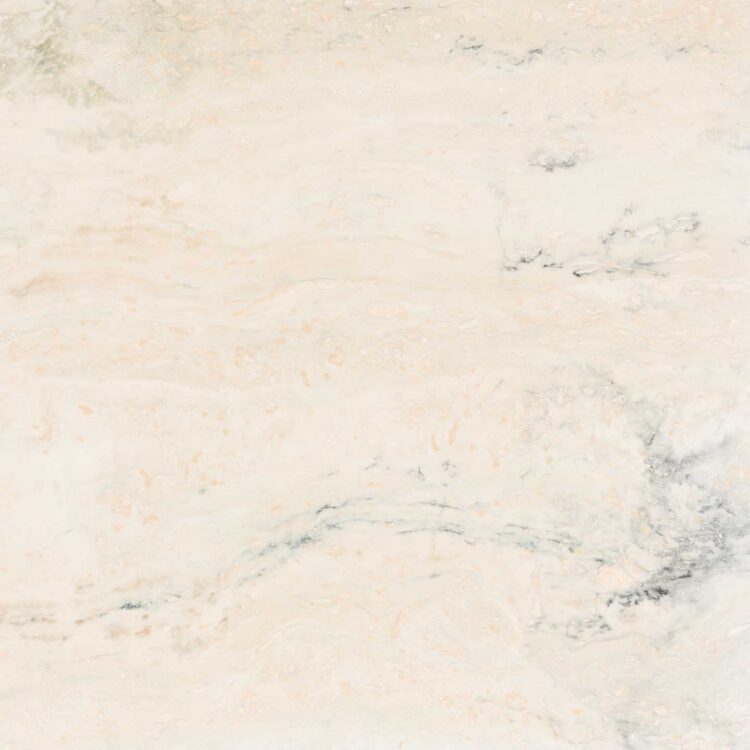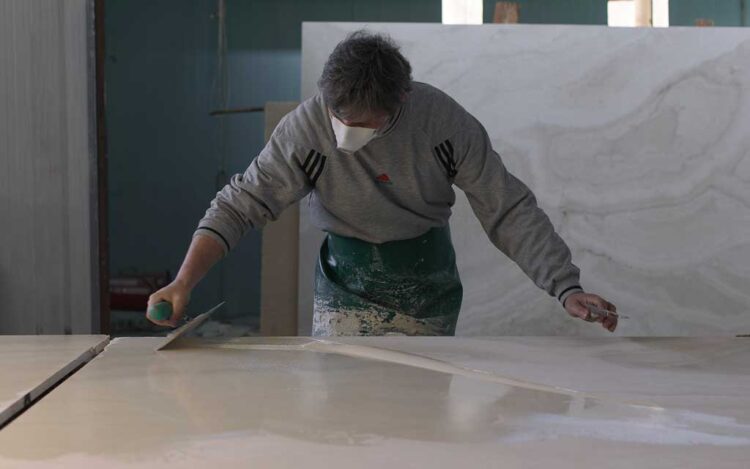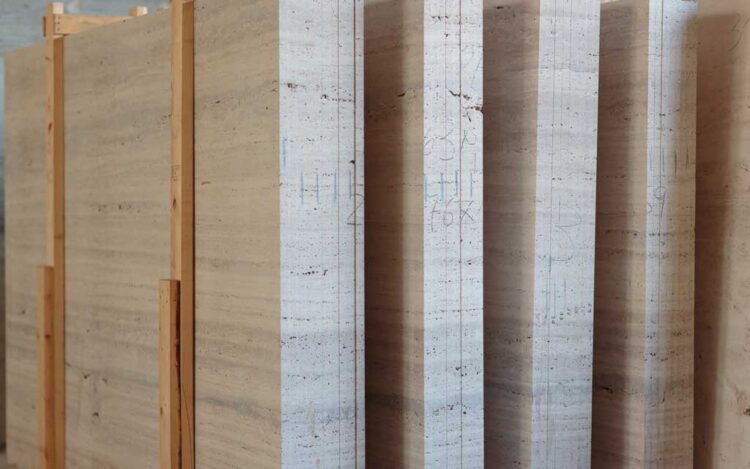Navona Silver Vein Cut Roman Travertine
Material: Roman Travertine
Origin: Tivoli, Italy
Availability: Blocks, Slabs, Cut to size
Suggested finishes:
saw cut, honed and stone color filled, honed and unfilled, brushed and unfilled, brushed and stone color filled, sandblasted, bush hammered
Suggested processing:
stone profiles, mosaics and patterns, vein match
General description
Travertine Navona Silver vein cut is the perfect mix of tradition and modernity and it is named after the famous square in the heart of Rome. Here, a majestic sculptural work of art shines under the sun rays, highlighting the purity and excellence of Roman Travertine.
Travertine Navona Silver is highly appreciated for the pure light cream tonality of the background on which gently stands out a blur of blue and grey streaks. The intricate pattern of delicate veins results from the vein cut technique. By cutting the blocks according to the direction of the natural veining, this process reveals the truest essence of Roman Travertine. The harmonious final visual effect is unequalled, especially when installed as panels or floorings.
Architects and artists from all over the world praise the unique features of Roman Travertine – resistance, durability, versatility, and fine, delicate shape. Travertine Navona Silver vein cut ensures a sense of tranquility, warmth and refinement to any settings, making it an elegant choice for both interior and exterior applications. Works of art and furnishing, especially countertops and tables, ensure a luxurious touch to the room, harmonize the design, and warm the ambience.
The Moor fountain in Navona square is just one of many examples of Roman Travertine, a raw and yet precious material, transformed by human talent and mastery into unique, breathtaking artworks.
Technical Specifications Roman Travertine Navona Silver
1) Flexural strength (UNI EN 12372)
1a) Load perpendicular to asiontropic planes
| Mean Fleaxural Strength | Standard deviation |
| 11,4MPa | 1,8Mpa |
1b) Load perpendicular to corners of asiontropic planes
| Mean Fleaxural Strength | Standard deviation |
| 10,4MPa | 0,8Mpa |
2) Freeze-thaw resistance (UNI EN 12371)
2a) Load perpendicular to asiontropic planes
| Mean Fleaxural Strength | Standard deviation |
| 5,6MPa | 1,4Mpa |
2b) Load perpendicular to corners of asiontropic planes
| Mean Fleaxural Strength | Standard deviation |
| 5,7MPa | 1,0Mpa |
3) Slip Resistance (UNI EN 1341)
| Mean Slip Resistance, Single Sample |
| 65 |
4) Abrasion Resistance (UNI EN 1341)
| Mean Abrasion Resistance |
| 25,0 |





